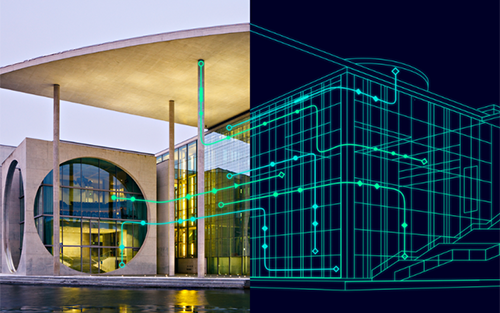summary
Standardization fosters collaboration, accelerates innovation, and facilitates the exchange of digital twin models and data.

As part of their collaboration with the W3C Consortium, Siemens and Microsoft announced an initiative to integrate the Digital Twin Definition Language (DTDL) into the international standards organization W3C’s Thing description standard.
Integrating both languages provides customers with a consistent modeling experience and reduces fragmentation in the evolving IoT environment. This integration allows for simpler system integration and interoperability, where customers typically deploy multiple vendors in their infrastructure, resulting in lock-in and advanced integration efforts.
Digital twins are virtual replicas of physical objects, processes, and systems that mirror their real-world counterparts in a digital environment, allowing organizations to monitor, predict, and improve the performance of their assets, increasing efficiency and reducing costs. . Standardization of digital twin languages is therefore critical for interoperability, ensuring seamless communication and integration between different digital twin systems and platforms.
Siemens is already driving the new W3C Thing description standard for future products in building management, power distribution, and smart grids, so extending this interoperability strategy to Microsoft Azure will provide significant benefits for customers. Probably.
“We believe the unification of two very similar digital twin languages like DTDL and W3C Thing description is an important move to enable customers to describe the physical world in a way that is independent of a specific IoT platform. ” said Chief Thomas Kiessling. Head of Technology at Siemens Smart Infrastructure. “This strategic alliance underscores our commitment to fostering collaboration and embracing openness.”
Microsoft’s Digital Twin Definition Language enables modeling of the physical world using Azure services, and the W3C Thing description standard provides a built-in, interoperable representation of device interfaces and standard industry ontologies. Both languages revealed many conceptual similarities during the early stages of convergence.
“Ever since we invented the Digital Twin Definition Language and open sourced its specification and reference implementation, we had planned to standardize it through a consortium like W3C. Integrating DTDL with the W3C Thing description is a natural next step in our efforts to democratize digital twins in the industry,” said Chief Architect of the Consortium and Industrial IoT, Azure Edge and Platforms Team. Standard, says Erich Barnstedt. , Microsoft.
About Siemens
Siemens Smart Infrastructure (SI) is shaping the market for today’s and tomorrow’s intelligent and adaptive infrastructure. Addressing the pressing challenges of urbanization and climate change by connecting energy systems, buildings, and industry. SI provides customers with a comprehensive end-to-end portfolio of products, systems, solutions and services from generation to consumption from a single source. With an increasingly digital ecosystem, we help customers thrive and communities grow while helping protect the planet. Siemens Smart Infrastructure has its global headquarters in Zug, Switzerland. As of September 30, 2023, the Company had approximately 75,000 employees worldwide.
Did you enjoy this great article?
Check out our free e-newsletter to read more great articles.
subscribe

